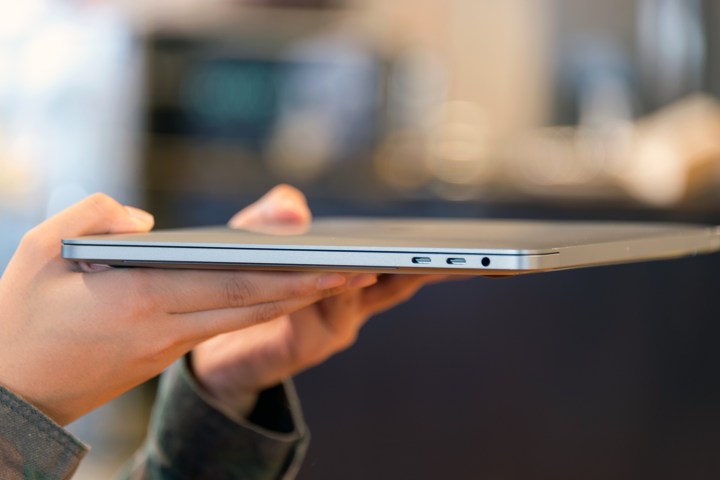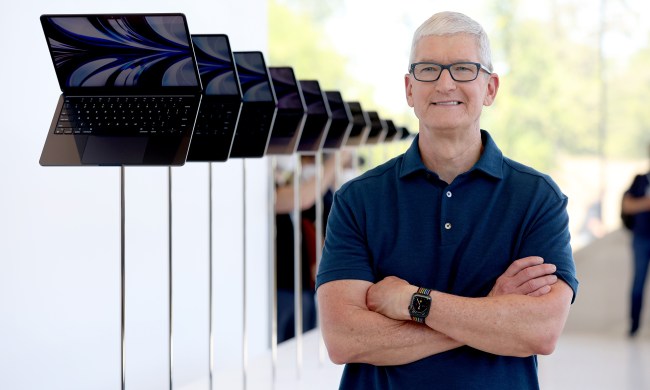
In terms of notebook PCs, the MacBook Air was the first successful model to make thin and light the primary selling point. And that made sense — most notebooks at the time were indeed quite chunky. Windows notebooks quickly followed suit, with Intel’s Ultrabook initiative leading the way.
Today, all but the least expensive notebooks, or most powerful gaming machines and workstations, are thinner and lighter than before the pursuit of thinness took hold. But being thin has taken a toll.
When thin becomes too thin
Now, we have notebooks that are so thin that they sacrifice functionality. They offer fewer ports, reduced-travel keyboards, and smaller batteries. The best example is the 2016 MacBook Pro, where Apple shaved off a few millimeters from an already thin machine, and in the process shaved off much of its appeal, too.
Battery life was sacrificed on Apple’s altar of thin design.
Perhaps Apple was merely being “courageous” in dropping all but USB Type-C ports, though it certainly appears that peripheral support was a victim of the company’s obsession with reducing thickness. The result is that users need costly, cumbersome, and inconvenient dongles to make up for the lack of connectivity. Then there’s the keyboard, where Apple opted for a slightly improved version of the less-than-popular 12-inch MacBook’s keyboard, rather than the much-revered MacBook Pro keyboard of old.
By far the most painful sacrifice made on the altar of thinness was battery life. Apparently, Apple had planned a more elaborate battery design that might have maintained battery capacity, but it ran into issues, and used a more traditional set of components instead. The result is ugly.
| Model | 2015 Battery Size | 2016 Battery Size | Difference |
| 13-inch MacBook Pro w/o Touch Bar | 74.9 watt-hours | 54.5 watt-hours | – 27 percent |
| 13-inch MacBook Pro with Touch Bar | 74.9 watt-hours | 49.2 watt-hours | – 36 percent |
| 15-inch MacBook Pro | 99.5 watt-hours | 76.0 watt-hours | – 24 percent |
Even worse, consider that the 13-inch model with Touch Bar — that is, the one with the additional OLED display — has a battery that’s even smaller than the model without it.
Apple has a reputation for maximizing battery life in its notebooks, but no matter how efficient Apple managed to make the new MacBook Pros, the fact remains – if it hadn’t focused so much on making the new machines thin, then it could have packed larger batteries inside, and perhaps increased battery life over previous models.
Some other manufacturers have also gone to extremes in the thinness department. Acer went thin with its Swift 7 and Spin 7. Asus has its very MacBook-like ZenBook 3. HP has its incredibly thin Spectre 13 notebook. Each of these are indeed thin machines – for Acer and HP, the “world’s thinnest” in their categories — and each are compromised in terms of battery life and connectivity.
However, these manufacturers — and the Windows PC ecosystem in general — offer a wide range of other machines that aren’t so thin and offer full complements of ports, long battery lives, and excellent keyboards. If you value an exceedingly thin Windows 10 notebook for whatever reason, then fine — there’s a machine for you.
The problem with the MacBook Pro is that other than, somewhat ironically, the ancient MacBook Air, there’s no up-to-date alternatives with a selection of legacy ports, classic keyboard, and uncompromised battery life.
HP’s courageous decision
HP recently demonstrated a different approach with its Spectre x360 15-inch 2-in-1. The company has decided to offer only a 4K display option with dedicated Nvidia graphics, and in the process has made the machine thicker to ensure that customers wouldn’t have to compromise on battery life.
We reached out to HP and spoke with Mike Nash, HP’s Chief Technologist and VP, Customer Experience and Portfolio Strategy. He confirmed that the Spectre x360 15 design decisions were very conscious. In fact, they resulted from copious amounts of research that HP conducted to discover what customers were looking for in the follow up to last year’s Spectre x360 15t, which proved a hot item for HP.
The research found that customers care greatly about battery life, keyboard quality, and ports, and that the target market for the new Spectre x360 15 strongly preferred the 4K display display. However, the old 4K model suffered from reduced battery life, at a maximum of 9.5 hours, compared to the Full HD model’s 13 hours.
HP wanted to find a way to meet all customer needs or, as Nash put it, to focus on providing an optimized experience, instead of what the company perceives as the compromised experience. HP decided to increase the machine’s thickness a bit to ensure that the 4K machine would give customers roughly the same battery life as the old model with Full HD screen.
HP went thicker as part of a strategy to optimize, rather than compromise.
The difference in thickness isn’t much – a little less than two millimeters was added — but that was enough to increase battery capacity by 23 percent, and achieve 12.75 hours with a 4K display. The system also retains a solid complement of ports and a keyboard with expected key travel.
Whereas Apple alienated a significant percentage of its otherwise loyal user base by sacrificing function for form, HP went in the opposite direction. It recognized that people want a nice-looking machine that’s relatively thin and light, but they don’t want to give up functionality to get it.
The end of thin?
HP isn’t alone in prioritizing function over form, of course. Dell, for example, has maintained essentially the same chassis for its XPS 13 and XPS 15 notebooks for multiple years, while increasing battery life in successive generations. The latest XPS 13, for example, increased battery capacity from 56 watt-hours to 60 watt-hours, while the new XPS 15 now has a whopping 97 watt-hour battery option, up from 84 watt-hours.
The point here isn’t to slam Apple. Rather, it’s to point out that the industry’s fascination with thin has likely reached its peak — and the new MacBook Pro took thin too far. Our notebooks, tablets, and smartphones are thin enough already, so it’s time to start focusing on what can be stuffed inside, instead. Let’s take our technology off its diet, and start focusing more on maintaining a healthy weight.



